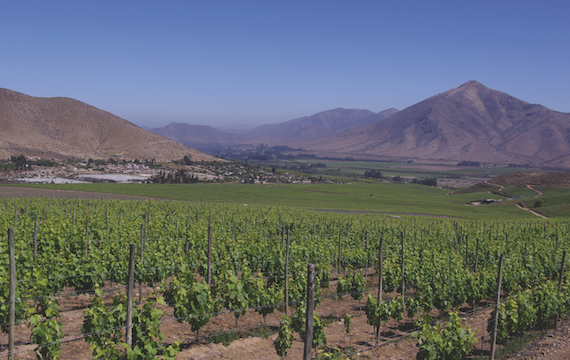VIGNO has 12 founder wineries, representing a mix from the small to the very big. The wines must be made from at least 65% old, dry-farmed Carignan vines from Maule, with any balance being also old vine Maule fruit. The vines have to be unirrigated and head-pruned bush vines (gobelet).
Both these movements are a step in the right direction. There are also some other interesting developments, which stem from exploring new viticultural areas.
Newer regions
The big story in Chilean wine is the emergence of new regions, but this is still a story that is only a few chapters in. Few countries have expanded their vineyards in recent years in the way that Chile has.
In the south, we have Bío Bío, in the north we have Limarí, Elqui, and even newer vineyards in the Atacama desert. There is also expansion of existing regions into more marginal coastal areas, or towards the Andes.
Marcelo Papa, chief winemaker for Concha y Toro, has helped lead the way here. “One of the things we have been able to do with our great variety of vineyard holdings is to explore the potential of many more marginal areas,” he says. “Regions such as Limari, Cauquenes, Rapel coast and Bío Bío are the future stars of the country.”
Noted Chilean terroir expert Pedro Parra agrees that Chile has an amazing diversity of vineyard soils, but he thinks these aren’t yet reflected in the diversity of wines on offer. Parra points out that Chile has plenty of terroirs, but he complains that the wines are still a little similar. “Winemaking overpowers terroir in many cases,” he says. “But this is changing and the vines are getting older.”
He highlights Cauquenes, Itata, and Bío Bío. But one factor that is holding Chile’s wine scene back, according to Parra, is centralism. “It is terrible here. People used to think that everything happens near Santiago. For many years we believed (and the world too) that the best places were Casablanca, Leyda, Maipo and so on.”
Felipe Tosso of Ventisquero has been busy exploring the potential of the Atacama desert, albeit on an experimental scale, and has released two remarkable wines under the Tara label – a complex, slightly cloudy, but thrillingly expressive Chardonnay and a precise, elegant Pinot Noir.
The attraction of Atacama lies in interesting soils, coupled with a cool climate. “To me, it’s a complete revolution that is coming,” says Tosso, “but we are not there yet. I feel that changes in styles, in origin, in personality of the wines, in freedom, and some craziness are on the way.
“As an example, some traditional old grapes such as Pais, which was always treated as a poor grape, is producing today some very interesting wines – from simple juicy wines, others with a lot of sense of origin, and even sparkling. But we are also recuperating an old way of making Pais called Pipeño.
“This is a simple wine sold in big bottles – the wine that has been consumed in the countryside for decades. Today we can start to see some in wine stores, or direct sales.
“We are also seeing some natural wines, wines in anfora, new Mediterranean grapes such as Garnacha and Monastrell, the old Carignan and Moscatel grapes and, in the north, new wines from limestone soils that really give amazing minerality.




